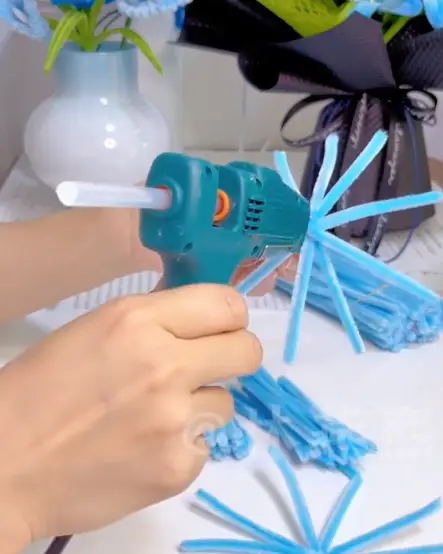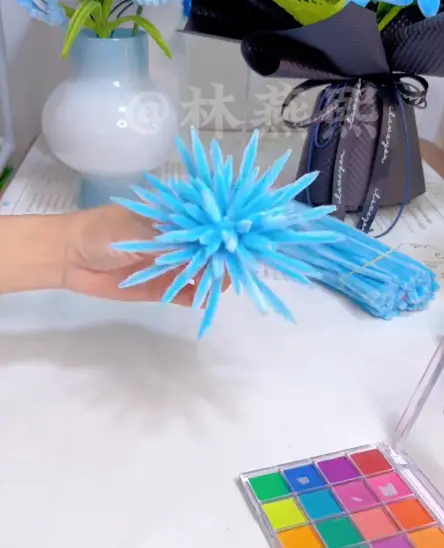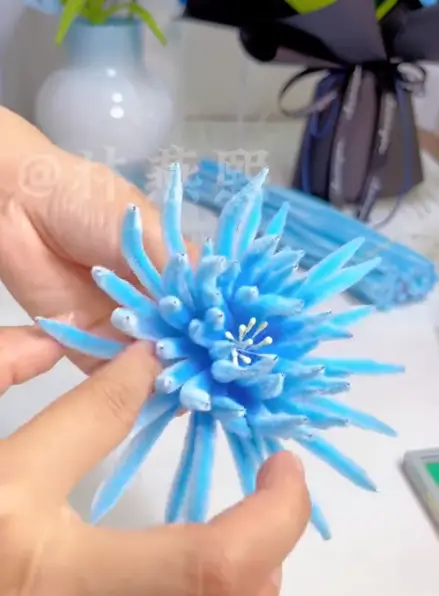🌟 Hurry – this special offer won’t last forever! Don’t miss the chance to save big and make your DIY dreams a reality. Click here to start your journey: https://temu.to/k/u7t97s4h9c3 🛍️
In the ever-evolving world of crafts, pipe cleaner flowers have emerged as a charming and versatile DIY project that appeals to both beginners and seasoned artists. These simple yet stunning creations offer endless opportunities for personalization, making them a favorite among crafters of all ages. The act of twisting and bending these vibrant chenille stems into intricate floral shapes is not just an artistic endeavor but a therapeutic one, drawing parallels to the meditative quality of traditional Japanese flower arranging, or ikebana. The accessibility and low cost of materials add to the universal allure of this craft, allowing anyone to transform a handful of pipe cleaners into works of art.
At the heart of the pipe cleaner flower trend lies the DIY movement, which has gained considerable momentum in recent years thanks to platforms like Pinterest and Instagram. The shift toward handmade and sustainable crafts has turned these modest materials into tools of self-expression. Influencers and artists such as Sophie Maletsky and Kelsey Montague have highlighted the beauty of crafting as a means of storytelling, showcasing pipe cleaner creations in everything from whimsical art installations to vibrant home decor.

The process of crafting pipe cleaner flowers begins with selecting materials. A rainbow of chenille stems, scissors, and optional embellishments like beads or ribbons are all you need. The simplicity of these supplies underscores the appeal of this project; it requires minimal investment and is perfect for spontaneous crafting sessions. Starting with classic designs like daisies or sunflowers is recommended for beginners, while those seeking a challenge can experiment with complex arrangements inspired by roses or orchids.
To create a classic daisy, start by choosing a bright color for the petals and a green pipe cleaner for the stem. Twist the petals into loops and secure them at the center with a twist of the green pipe cleaner, which also forms the stem. Adding a yellow bead or a coiled piece of pipe cleaner to the center adds dimension and a realistic touch. The steps are straightforward but open to endless variations, allowing crafters to adapt the design to suit their preferences. This adaptability has made pipe cleaner flowers a favorite project for educators and parents, who use them as a tool to teach creativity, fine motor skills, and color theory to children.
In the broader context of art and culture, pipe cleaner flowers represent a fascinating intersection of simplicity and innovation. They echo the ethos of the Maker Movement, which celebrates the process of creating as much as the finished product. Celebrities like Drew Barrymore and Zooey Deschanel, known for their appreciation of all things whimsical and handcrafted, have further propelled the trend. Their social media posts often feature handmade items, aligning with the cultural shift toward valuing the unique over the mass-produced.

Beyond their aesthetic appeal, pipe cleaner flowers serve as a gateway to mindfulness. The repetitive motions of twisting and shaping the pipe cleaners can bring a sense of calm and focus, akin to practices like knitting or calligraphy. This aspect of crafting has been widely recognized for its mental health benefits, with studies showing that engaging in creative hobbies can reduce stress and promote emotional well-being. In a world increasingly dominated by digital distractions, the tactile nature of crafting offers a grounding, hands-on experience that fosters a sense of accomplishment.
Pipe cleaner flowers are not confined to casual crafting; they have found their way into professional art and fashion as well. Designers and artists have incorporated them into unique pieces, from avant-garde headpieces to statement jewelry. The versatility of pipe cleaners allows for an interplay of texture and color that is both playful and sophisticated, challenging preconceived notions about the medium. This blend of accessibility and artistry has positioned pipe cleaner crafts as a bridge between amateur and professional creative worlds.

In addition to their artistic and personal significance, pipe cleaner flowers carry a strong environmental message. As society becomes increasingly aware of the need for sustainability, the use of reusable and recyclable materials in crafting has gained importance. Pipe cleaners, often made from synthetic fibers, can be repurposed repeatedly, reducing waste and encouraging a culture of reusability. Incorporating these flowers into decor, gifts, or accessories eliminates the need for disposable alternatives, aligning with the principles of eco-conscious living.
The popularity of pipe cleaner flowers also reflects a deeper societal yearning for connection and authenticity. In an age where mass production dominates, the act of creating something by hand is a powerful statement of individuality. Handmade crafts, including pipe cleaner flowers, carry a personal touch that resonates with both creators and recipients. Whether given as a thoughtful gift, displayed as decor, or used as part of a larger artistic piece, these flowers embody the care and creativity of their maker.

For families, pipe cleaner flowers offer an opportunity to bond through shared creativity. Parents and children can work together to design colorful bouquets, fostering communication and collaboration. Schools and community centers have also embraced this craft as a way to bring people together, using it as a platform for teaching and interaction. The universal appeal of pipe cleaner flowers makes them a unifying project that transcends age, skill level, and background.
As crafting continues to evolve, pipe cleaner flowers remain a timeless and adaptable project. They celebrate the joy of making, the beauty of imperfection, and the limitless possibilities of creativity. From their humble beginnings as a children’s craft to their emergence as a respected medium in art and design, these flowers have grown into a symbol of what can be achieved with imagination and resourcefulness. Each twist and bend tells a story, reminding us that beauty often lies in the simplest things.





